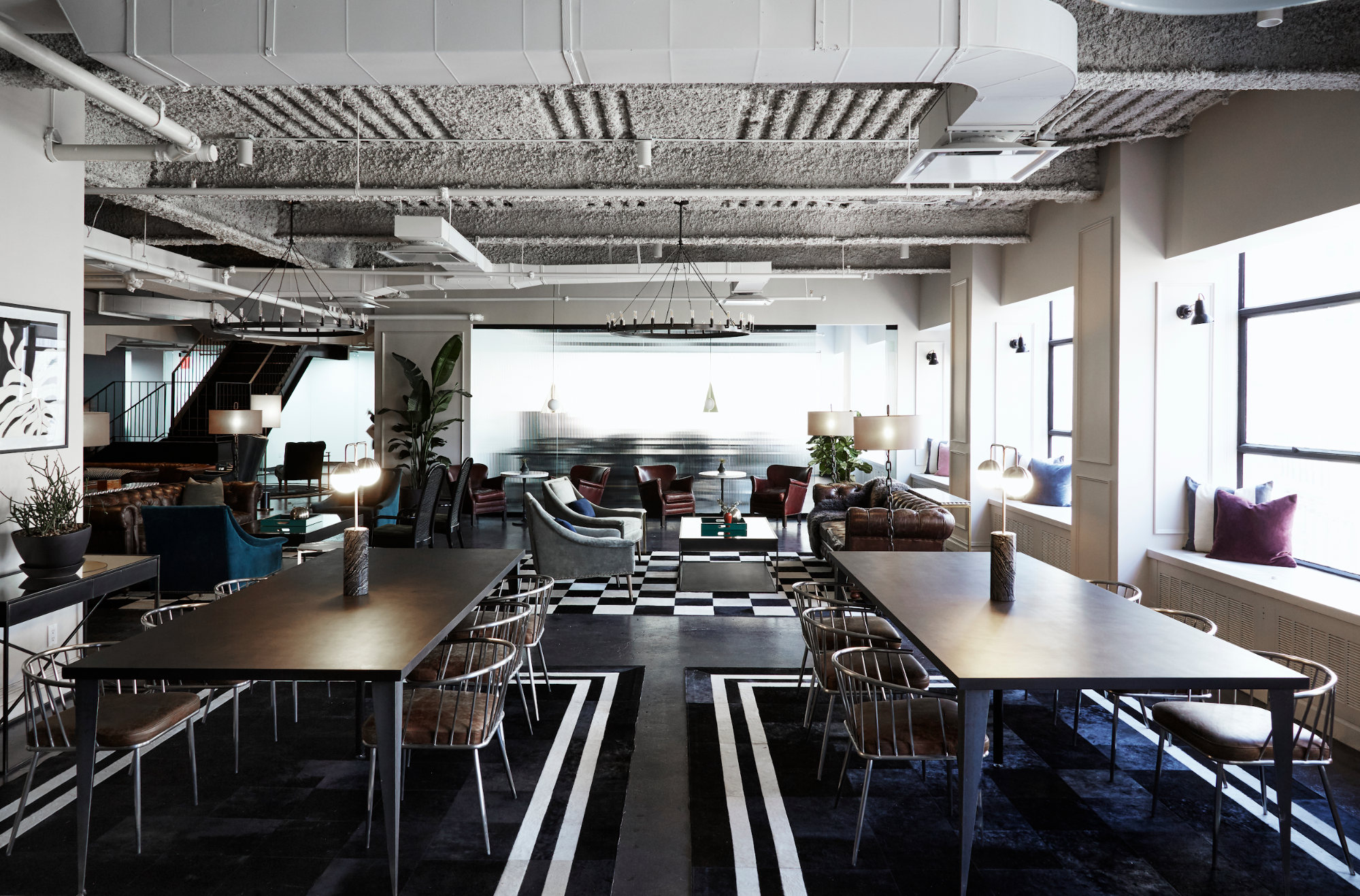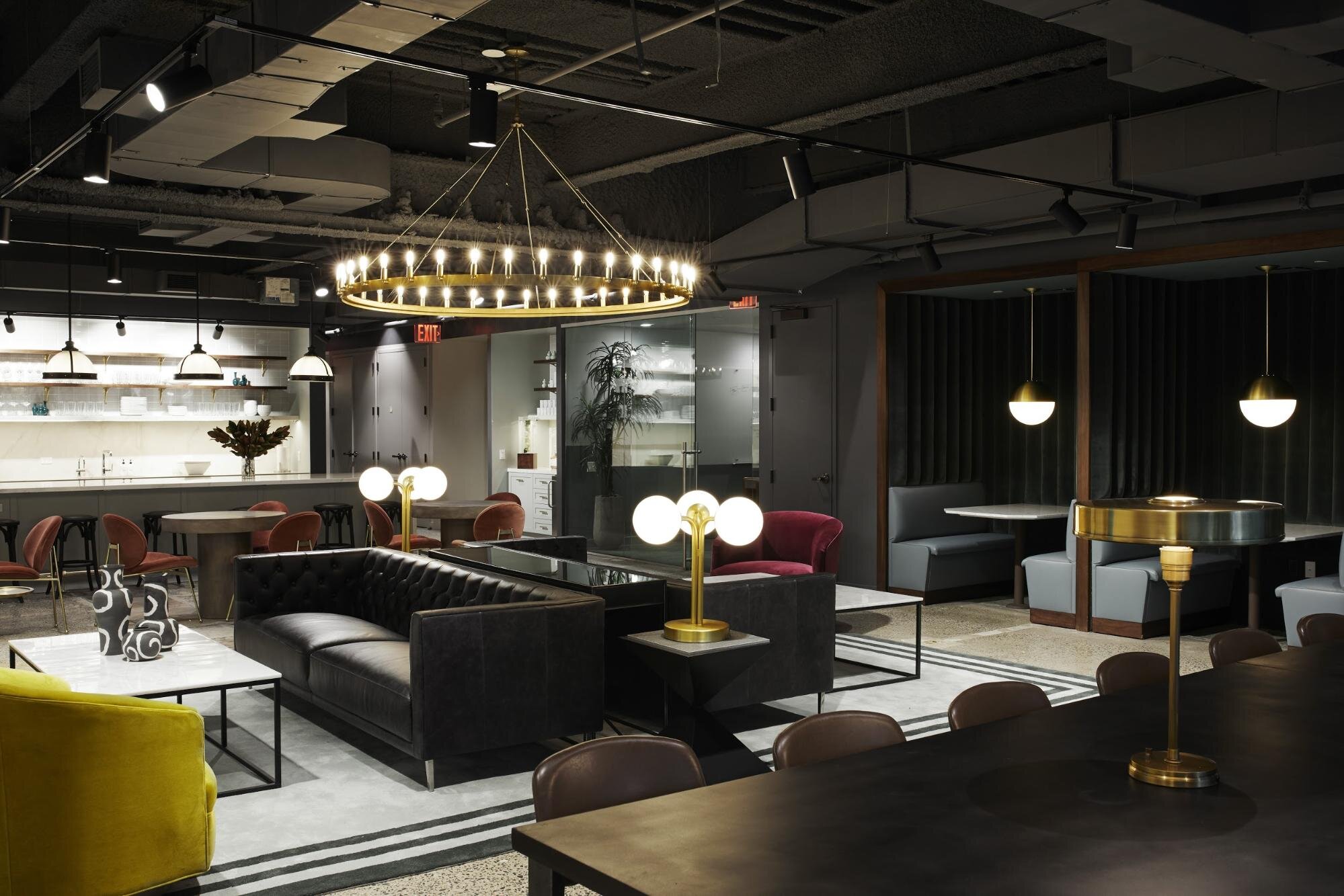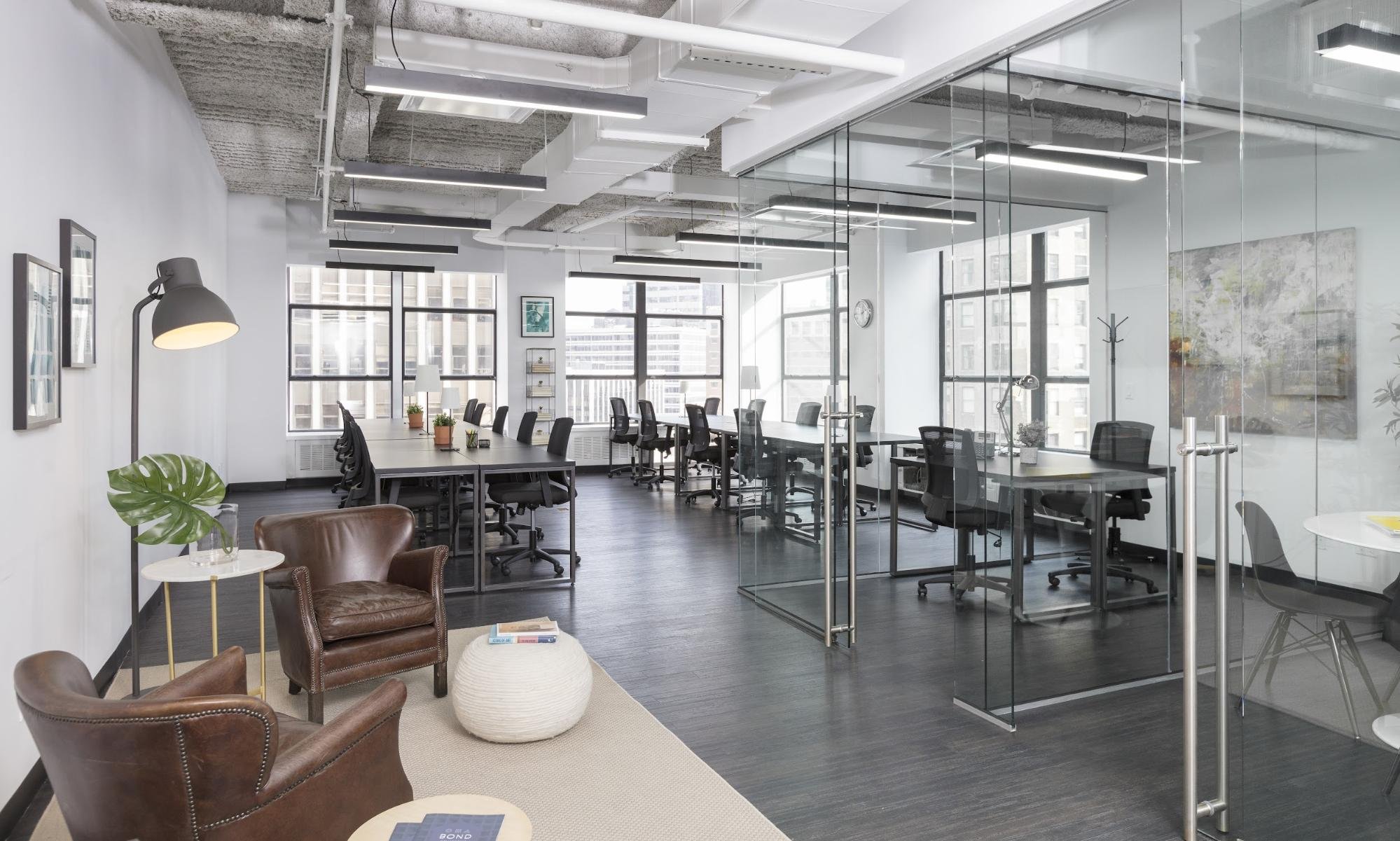By Bond Collective Staff
For teams of all sizes, operating successfully in a flexible workspace means being able to accommodate many different activities (e.g., team meetings, quiet work, and collaboration) in the same general area without undue difficulty or disruption.
For an entrepreneur who’s just getting started (and may be working all by themselves or as part of a small team), operating successfully in a flexible workspace means enjoying the same options as a larger business without the cost of owning and maintaining their own office.
In this article, the experts at Bond Collective discuss the benefits of a flexible workspace for entrepreneurs who’re ready to take the business world by storm.
What Is Flexible Workspace?
As we touched on at the beginning of this article, flexible workspace is an office concept that makes it easy for teams large and small to do two things:
-
Work together on different tasks in the same general area
-
Modify the space to allow these activities to take place
In a traditional office model where one business works in their own dedicated building or on their own private floor, flexible workspace is more about easily-movable furniture that allows teams to spread out and arrange the furniture to their needs so they can work wherever the inspiration strikes them.
In the more modern office model where multiple businesses, teams, and even individuals work in the same shared office environment, flexible workspace is about providing a variety of seating options to accommodate whatever work needs done.
In a flexible workspace environment (such as those at Bond Collective), you’re likely to find businesses of all sizes — or even teams from businesses that own their own space.
A team of 100 from a large, international company might be working side-by-side with a solopreneur just starting a new business or a freelancer who is tired of working from home. They can benefit from a variety of spaces, just like the office space in Los Angeles.
This is made possible thanks to communal areas with multiple seating options such as private offices, conference rooms, hot desks, dedicated desks, lounge areas, and more.
The benefits of this new office model for entrepreneurs might not be readily apparent, but when you look below the surface of what flexible workspace has to offer, you’ll discover advantages that you can’t find anywhere else.
Benefits Of Flexible Workspace
1) Infrastructure
Infrastructure is all the little things that make work possible, such as:
-
Utilities
-
Technology
-
Furniture
-
Storage
Infrastructure even extends into necessary responsibilities that make the office run such as cleaning, restocking, controlling heating and cooling, and much more.
In a traditional office environment, you, or one of your team members, would have to take care of those issues.
In a flexible workspace like Bond Collective, those details are handled for you. That means you and your team can focus on work without worrying about who’s going to refill the water cooler.
2) Low Overhead
If you owned your own building or leased your own floor, not only would you be responsible for managing the infrastructure, you’d be responsible for paying for it, too.
That can take a major bite out of your operating capital.
But with a flexible workspace like Bond Collective, your business and all the other businesses working there pay for the infrastructure together.
Through this collective arrangement, your business will pay significantly less for its overhead when compared to the traditional office model of one business, one space.
3) No Long-Term Lease
You can avoid the risk of a long-term lease by basing your business — large or small — in a flexible workspace.
A long-term lease locks your business into a payment that won’t adapt as the market changes. The flexible workspace is much more…well, flexible.
You pay month-to-month for the footprint your team needs and avoid the issues that come when your market drops and you need to allocate funds for other, more important uses.
4) Professional Image
As an entrepreneur, professional image often takes a back seat to product or service development. A lack of professional image, however, can cause problems down the road when you need to meet with clients.
But when you base your business in a flexible workspace, professional image comes standard.
At Bond Collective, for example, all members benefit from guest reception, luxury decor, comfortable workspaces, and 24-hour access to conference rooms.
With a flexible workspace like this, you can focus on keeping your product or service development funded without sacrificing the professional image you need to succeed.
5) Agility
Agility is all about being prepared for the inevitable ups and downs your business will experience during its lifetime. A flexible workspace can help.
During lean years, your income goes down and your staffing needs decrease. During prosperous years, your income goes up and your staffing needs increase.
In both of those cases, a flexible workspace allows you to stay agile by expanding or contracting your “office footprint” accordingly.
Bond Collective, for example, makes it easy to change where you work from one month to the next. Your team can occupy dedicated desks in the first quarter, upgrade to private offices in the second quarter, and then downgrade to first-come-first-served desks in the third quarter.
That agility will help you save working capital and keep your business competitive longer.
6) Collaboration
As an entrepreneur, it often feels like you’re working in a vacuum with no input from anyone else. That lack of guidance and motivation can quickly bring your progress to a standstill.
A flexible workspace, on the other hand, allows you to work side-by-side with professionals from a wide variety of businesses. And when you work in close proximity with experts in their field, collaboration is inevitable.
Say, for example, that you strike up a conversation with a freelance coder in the lounge area one morning and find that your SEO business could expand into new markets with a bespoke app.
You can hire that person — or that person’s business — to work together on making that inspiration a reality. That’s collaboration in a nutshell and applies to individuals interacting with other individuals or teams interacting with other teams.
It doesn’t matter how large or small your business is, a flexible workspace makes collaboration easier than ever before.
7) Inspiration
Whether you work as an entrepreneur by yourself or as part of a small team, the daily grind can take its toll.
It’s all too easy to lose creativity and develop tunnel vision when you work on a single idea day in and day out.
In a flexible workspace, you’re always surrounded by professionals from different niches with unique perspectives and ideas.
All it takes to reclaim your inspiration and breathe new life into your project is a conversation with someone in another industry who sees things just a bit differently than you do.
8) Comfort
As an entrepreneur, you’re ready to work anywhere to get the job done. But uncomfortable chairs, limited room to spread out, and too much noise (just to name a few) are not conducive to getting the job done right.
A comfortable environment plays a big role in helping you — and your team — maintain the creativity and productivity you need to take your business to the next level.
Most first-time business owners and entrepreneurs can’t afford luxuries like ergonomic chairs, adjustable-height desks, conference-size tables, and comfy sofas. Their money is tied up in getting their product or service off the ground.
When you base your startup — whether it’s just you or you and a small team — in a flexible workspace like Bond Collective, you get comfort built in. And that comfort isn’t an afterthought. It’s not an also-ran.
Our flexible workspaces are built and designed around two core principles: comfort and function. So you don’t have to expend energy trying to get comfortable while finishing that big project.
You can just focus on the work and on building your business into the success you know it can be.
9) Protection From Unpredictable Change
As we’ve touched on throughout this list, flexible workspaces offer a unique benefit that you can’t find in other office options: protection from market volatility.
Whether it’s unused square footage, the need for more or fewer team members, or just conserving capital for the next stage of development, flexible office spaces can protect your business from the ups and downs of your industry.
In a flexible workspace like Bond Collective, your business will be more nimble. This ability to react to change can give you a leg-up over your competitors who are more exposed to the ups-and-downs of the market because their money is tied up in a long-term lease.
10) Reduced Occupancy Cost
The cost of finding, leasing, and equipping your own office space in today’s market is astronomical. This makes it cost-prohibitive for all but the largest companies.
And whether you own the building, or you’re merely renting, the advantages of the flexible workspace quickly manifest themselves as reduced occupancy costs.
As an established business, sharing your space with other businesses, teams, and individuals helps you eliminate resources that may have been going unused (i.e., empty offices).
As a nascent business, flexible office spaces give you the opportunity to work from an attractive, fully furnished workspace at a fraction of the cost of leasing your own building.
How To Create A Flexible Workspace
1) Create Pods
When most people think about flexible workspace, they envision long tables of designated stations, like cubicles without the walls. But this isn’t the best arrangement for productivity.
Instead of row-after-row of workstations, group two, three, or four desks into “pods.”
This type of setup minimizes the localized noise pollution that can cause team members to lose focus and provides a bit of empty space between stations so employees don’t feel like sardines in a can.
2) Furnish With Active And Modular Furniture
In a flexible workspace, active and modular furniture and storage give your team members the option to rearrange an area to suit the needs of the moment. That makes for a much more work-friendly environment.
Furniture and storage that employees can move around and alter give them more control of the way they work.
Whether you’re thinking about where to situate your pods or about what type of tables to include in your collaboration space, the variety and flexibility you plan for in your workplace extend all the way down to the individual pieces of furniture you choose.
For a happier, healthier team, incorporate active and modular furniture instead of relying solely on the standard desk and chair setup.
Active and modular furniture includes the likes of:
-
Cafe tables
-
Large tables on rollers
-
Ergonomic chairs
-
Movable ottomans with built-in storage
-
Pedestal stools
-
Saddle chairs
-
Adjustable-height desks
-
Rolling file cabinets
-
Even treadmills and bike chairs
Having a variety of seating, work-surface, and storage options allows your team members to change positions often to accommodate private and group work while helping them avoid the physical strain that comes with sitting for eight hours every day.
3) Set Aside Space For Focus
When setting up a flexible workspace, think in terms of zones of specific types of work. Chief amongst those zones is the focus space.
Yes, a big part of the way your business works depends on team collaboration. As such, you want plenty of space to facilitate that activity.
Equally important, though, is providing a place for team members to go when they need a bit of quiet to focus on a single task and work by themselves. That’s what the focus space is for.
Locate this space so that it is as far away from the noise of collaborative work areas as possible. You may even go so far as to wall it off to cut the noise and distraction completely.
At the very least, consider delineating the space between focus and collaboration with tall plants, bookcases, or other sound and visual breaks.
4) Decorate With Natural Elements
Transform the aesthetic of your flexible workspace and bring a softer, more natural touch to the room by adding plants to your decor.
Bringing the outdoors into your office does more than just spruce up the space; it also boosts morale and productivity — two variables that you might find difficult to maintain for long periods of time.
Research shows that teams that work in sight of even a single plant are more productive than their plantless counterparts — even in the lean workspaces occupied by entrepreneurs and startups.
As we mentioned earlier, you can use plants to separate one work area from another, but you can also use them to absorb sound and make the environment more inviting.
They offer the added benefit of being easy to move should you choose to redecorate. Need to relocate your quiet area to the other side of the space? A wall of plants is easier and less costly to move than a regular lumber and plywood divider.
If you’re stuck for other ideas on how to green up your office layout, try arranging a few plants on the windowsills in your office or clustering them in a drab corner of the room.
For more suggestions on using plants to improve productivity in your work environment, take a few minutes to read these helpful articles from the Bond Collective blog:
5) Establish Phone Call And Meeting Spaces
Few things are as disruptive as phone calls within a busy office.
Employees using a phone often talk loudly in order to be heard — even if it’s not necessary — and it’s very difficult to break that habit. All that loud talking can seriously disrupt the other team members within earshot.
Similarly, meetings — even between just two people — can get loud and distract those nearby. The solution? Dedicated areas for these activities.
In the same way that you established space for quiet work, set aside similar space for phone calls and small meetings. Large meetings naturally occur in the conference room, so these workspaces don’t have to occupy a huge area — three or four enclosed booths work well.
Even a small amount of space between conversations will help keep disruptions to a minimum and allow everyone to work at their best.
6) Organize The Cords And Cables
Few things make your flexible workspace feel more disorganized than a mass of cords and cables. Simply knowing that a big knot of wires is hanging under your desk or lying on the floor is enough to distract even the most focused person.
Invest in a cable organization system for your workstations so there’s less disarray, and consider purchasing furniture with built-in power outlets so team members don’t have to string long lengths of cord from walls to their work surfaces.
7) Provide Busy Indicators
In more traditional layouts with private offices, team members could close the door when they didn’t want to be disturbed. Not so in many modern offices.
Sometimes, though, an employee really needs to focus and doesn’t want to answer questions or talk to others. But how can they communicate this to those working near them?
Provide everyone with a “busy” indicator and encourage them to display it when they don’t want to be disturbed. It doesn’t have to be anything elaborate — something as simple as a sticker, flag, sign, or light will work.
The purpose of it being to communicate from afar whether or not the team member is amenable to interruptions.
8) Allow Space For Movement
When setting up your workspace, keep high-traffic areas clear and allow room for movement. You may be tempted to wedge a few more workstations into or near common spaces, but that’s a mistake.
Areas around bathrooms, kitchens, breakrooms, elevators, and stairs are full of distractions and are not conducive to focus and productivity.
Keep those public spaces clear and allow them to do what they were designed to do: handle the movement of people within a busy office.
Skip The Stress Of DIY
If you own or lease your own space, it is possible to create a flexible workspace within and around what you’ve already got.
Doing so, however, takes time, effort, and funds that you may not have — not to mention the disruptions it will cause — so why not partner with the professionals at Bond Collective and let them do it for you?
All The Flexible Workspace You Need
At Bond Collective, we offer all the flexible workspace you need to run your business better than ever before.
Whether you need a private office, a suite of offices, or just a place to sit and type, you’ll find it all at any one of the many Bond Collective locations across the country.
It doesn’t matter if you’re a team of one or 100, you’ll enjoy all that Bond Collective has to offer including industry-leading amenities, such as:
-
Conference rooms for 2 or 20+
-
Custom build-outs
-
Private meeting and phone booths
-
Guest reception and greeting
-
Professional image
-
Unlimited black-and-white printing
-
Fast, reliable WiFi and ethernet
-
Mail and package handling
-
Porter service
-
Nightly office cleaning
-
Fresh fruit, snacks, and weekly breakfast
-
Complimentary spa water, craft beer, and coffee
Visit any one of Bond Collective’s many locations in the United States — including workspaces in Los Angeles, Philadelphia, New York City, Brooklyn, Washington D.C., and Chicago — to see what the pinnacle of flexible workspace has to offer.








